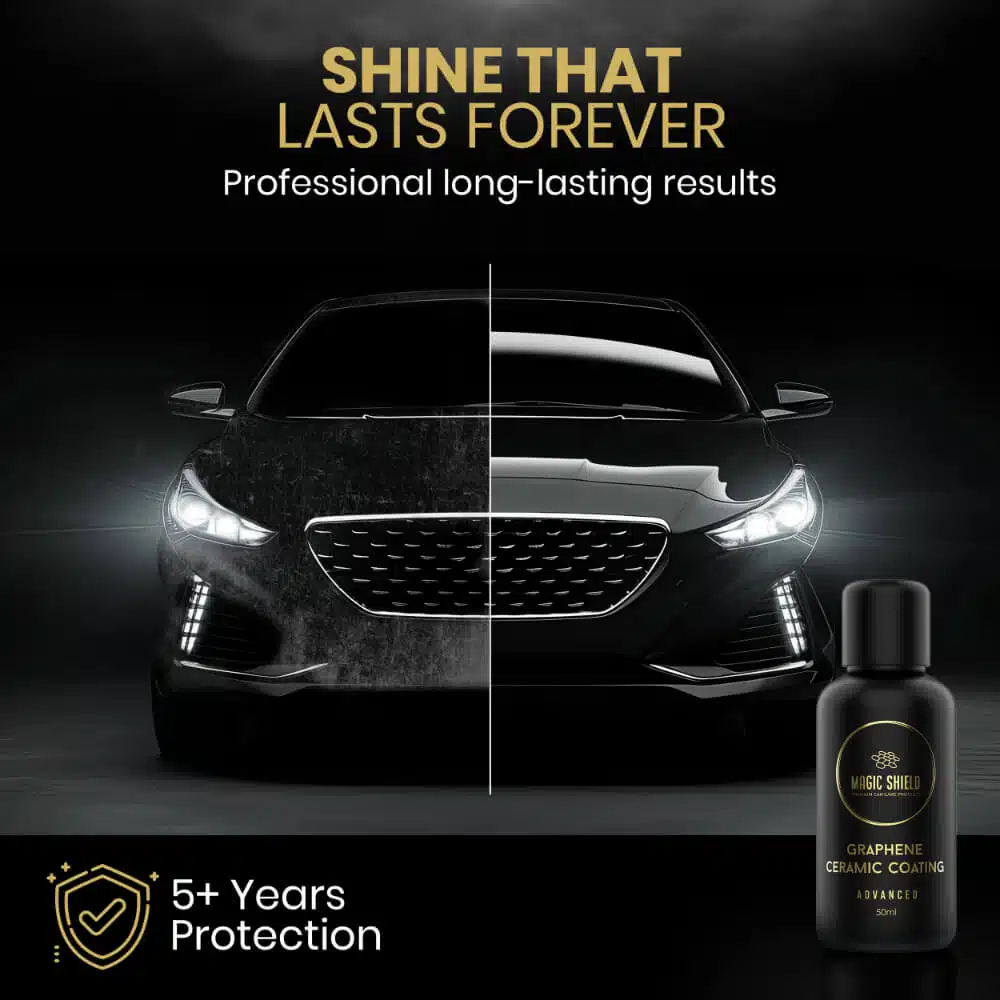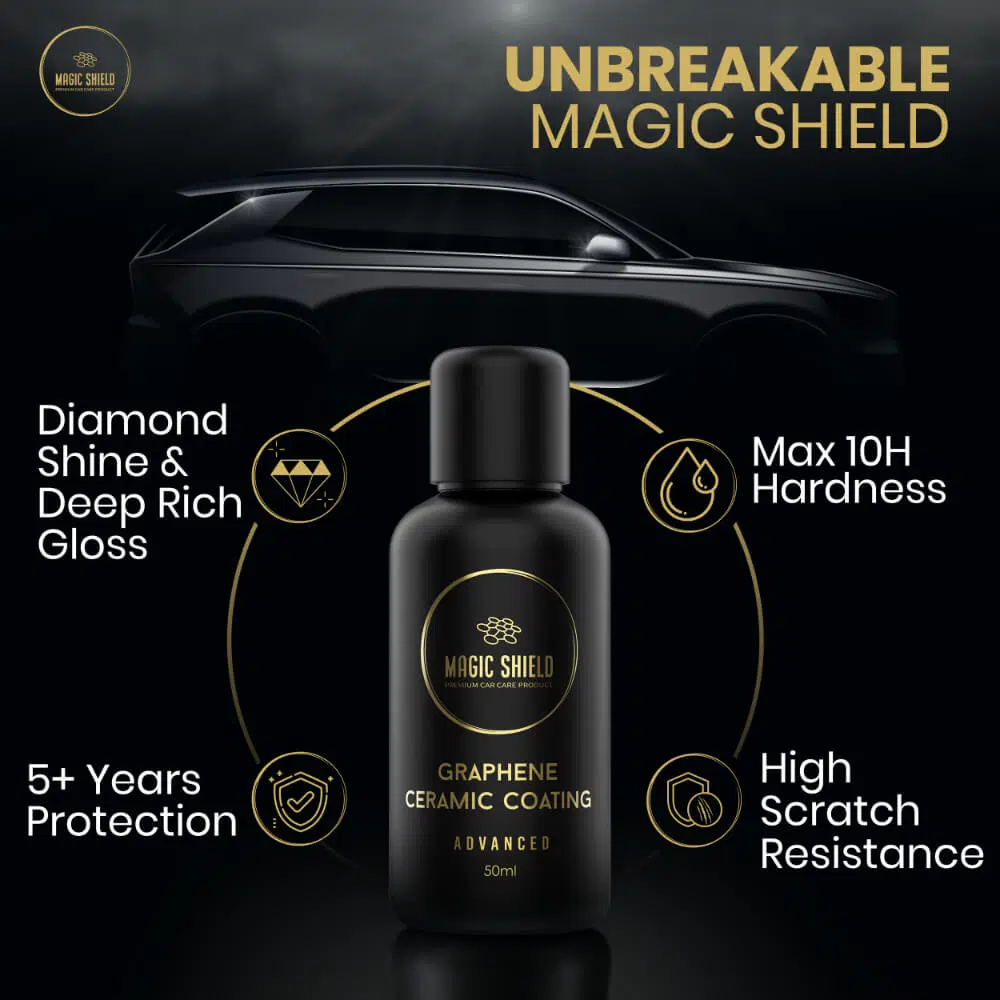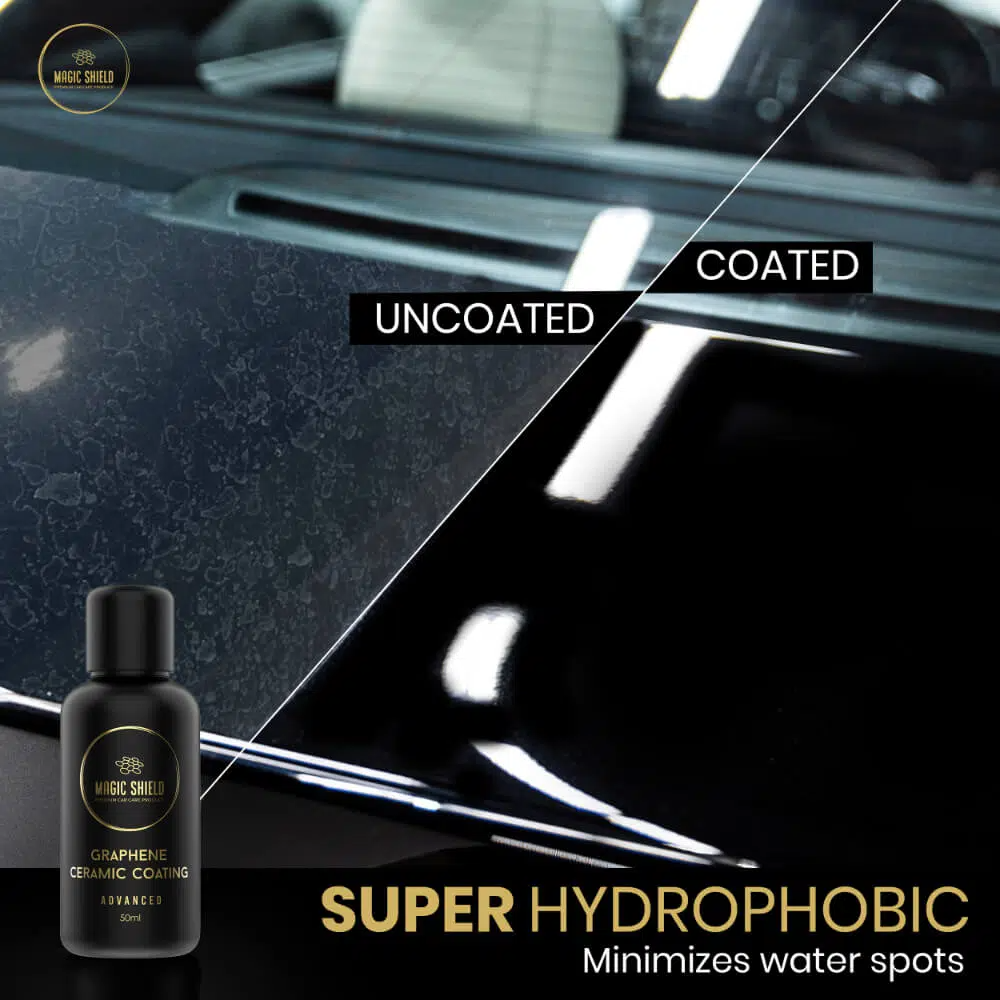
Introduction
Thus introducing Graphene Ceramic Coating to the revolution. It is an advanced formulation that combines the strength and conductivity of graphene with the durability of ceramic coatings, giving a level of protection and gloss that is unachievable by any previous formulation in the detailing industry. Whether you are just an occasional driver or you have a car at heart, it certainly helps in lending you insight into how Graphene Ceramic Coating can alter the care you provide for your vehicle, so important choices can be made when preserving an asset that is continuously growing in value.
What Is Graphene Ceramic Coating?
Besides the chemistry of it, Graphene Ceramic Coating is akin to a liquid polymer that is nano-infused and chemically bonds with the factory paint of a car to create a semi-permanent hydrophobic top layer. In contrast to traditional ceramic coatings that rely solely on silicon dioxide (SiO2), graphene-enhanced formulas have just a monolayer of carbon atoms arranged in a hexagonal lattice. This specific configuration brings about extraordinary mechanical strength, enhances heat conductivity, thereby stabilizing the coating at high temperatures and with environmental stresses.

Benefits of Graphene Ceramic Coating
Improved Durability, Scratch Resistance
The hardness of a ceramic matrix increases with the incorporation of graphene. An applied Graphene Ceramic Coating rated at well beyond 9H on the pencil hardness scale makes swirl marks and minor scratches that often damage untreated surfaces almost nonexistent.
Best Heat Evacuation
Graphene Ceramic Coating has much better heat circulation as compared to other ceramics, mainly due to the incredible thermal properties of graphene. This helps to avoid paint damage due to heat, such as micro-cracking and fading, due to extreme sunlight areas, or engine compartments.
Unmatched Hydrophobic Performance
Graphene Ceramic Coating is maybe best known however one feature, hydrophobicity. Water, muck, and sludge bead up and roll off it in what can sometimes appear like the simplest of efforts, extending intervals between washes and keeping the showroom shine for record durations.
UV and Oxidation Protection
Ultraviolet rays adversely affect the paint surface and oxidize it very rapidly; at the same time, the paint can lose its lustrous sheen and even cause a shift in the shade. A thin but very tough layer of Graphene Ceramic Coating serves as UV shielding and protects the clearcoat and paint layers underneath from harmful radiation.
Chemical and Corrosion Resistance
Road salts, fallout from the factories, bird droppings, and acid rain could wreak havoc on the vehicle finish. Graphene Ceramic Coating acts towards chemical inertness at its best, therefore ensuring the contaminants cannot attach to the paint and making them much easier to remove during the routine washes.
The Application Process
To reap the complete benefits of Graphene Ceramic Coating, great pains have to be taken during preparation and application so that the utmost skillfulness is used:
Decontamination: A wash and a thorough decontamination process with clay bars or chemical deglossers is performed to eliminate embedded particles.
Paint Correction: Any existing swirls, scratches, or etchings are polished out. Without this vital process, imperfections become trapped and locked forever under the coating.
Coating-Panel by Panel: A controlled environment is highly desirable; still, most installers perform their installations outdoors using tents. The graphene formula is applied thinly with the use of a foam applicator for smooth, efficient application.
Curing: After application, the coating must be allowed to bond for some time, usually anywhere between twenty-four and forty-eight hours, where no moisture is allowed on the coating. Avoid driving the vehicle when the weather is inclement or extreme temperatures during the curing time.
Comparing the graphene ceramic coating with conventional coatings:
Traditional SiO₂-based ceramic coating technologies have revolutionized vehicle protection in the last ten years, and graphene ceramic coatings take this technology further. Traditional ceramics are characterized by hardness and hydrophobicity, but they do display brittleness and thermal stress weakness. The flexibility and heat management of graphene counteract these disadvantages by providing the following advantages:

Durability: Most manufacturers of graphene coatings give warranties of up to five years, thus far eclipsing many traditional products.
Gloss and Clarity: Graphene’s light refraction capacity creates profound, vibrant colors and mirror-like reflections.
Easy to Maintain: Scratch resistance and chemical inertness lessen maintenance, thus saving time and money on cleaning.
Real‑World Performance and Case Studies
Several detailing garages across North America and Europe have conducted side‑by‑side tests. In one six‑month trial, two identical sedans—one treated with a standard ceramic coating, the other with Graphene Ceramic Coating—faced identical urban driving conditions. Notably, the car vehicle suffered micro dents close to 40% less than without the graphene coating. The coating also produced a value almost 25% higher for the amount of shine retained under UV spectrophotometer analysis and repelled water more effectively during heavy rains.
Maintenance and Care Suggestions
Follow these simple measures to get the longest term out of your new Graphene Ceramic Coating:
Regular Soft Washing: Use only pH-neutral shampoos and microfiber mitts.
Avoid Automated Brushes: Soft foam or turbo brushes are less likely to introduce swirl marks.
Use Lubricated Clay Bars Sparingly: If contamination returns, re‑clay the surface, but do so gently.
Top-Up Sprays: A quarterly graphene-infused detail spray can rejuvenate hydrophobic properties without requiring a full reapplication.
FAQs:
What is Graphene Ceramic Coating, and how is it different from conventional ceramic coatings?
Graphene Ceramic Coating is the world’s first hybrid nanotechnology-infused protectant, created by a single-atom-thick layer of carbon in conjunction with silicon dioxide. Graphene Ceramic Coating, being an advanced co-ceramic coating, provides superior thermal conductivity and flexibility, which renders it much more durable and particularly resistant to micrometric cracks as compared to other ceramic coatings.
How long does Graphene Ceramic Coating last on my vehicle?
Graphene Ceramic Coating, when professionally applied and properly maintained, will last at least three years and up to five years because it has been reinforced in such a molecular structure to withstand environmental exposure more than standard ceramic products.
Can I apply Graphene Ceramic Coating myself, or do I need to hire a professional installer?
There are some DIY Graphene Ceramic Coating kits available, but it is recommended to have a professional preparation done on the surface as well as a very accurate application in a controlled environment for curing the paint in order to assure that the coating adheres uniformly across all paint panels.
What maintenance will be required after applying Graphene Ceramic Coating?
To maintain the hydrophobic and protective properties of Graphene Ceramic Coating, wash with neutral pH shampoos without abrasive brushes and consider quarterly topped-up sprays with a graphene-infused formula, rejuvenating the coating without the need for full reapplication.
Will the Graphene Ceramic Coating therefore stand against chemical etching and droppings from birds?
Indeed. The inert, ultra-dense surface created by Graphene Ceramic Coating makes it almost impossible for most harsh contaminants, acid rain, bird droppings, and road salts to bond to the paint, making them easier to rinse away.